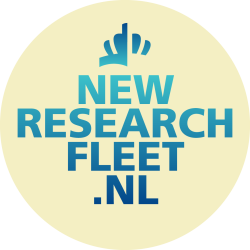Frequently Asked Questions
Frequently Asked Questions
1 Why does the Netherlands need its own research vessels?
The Netherlands is a seafaring nation and a good understanding of marine systems worldwide is of strategic importance. Decisions and measures that are taken at a political level are usually based on the results of independent scientific research and that is why research vessels are needed.
2 Why don't we use existing ships (e.g. from Rijkswaterstaat, Ministry of Defence)
Ships from Rijkswaterstaat and the Ministry of Defence are built for specific purposes, such as fisheries research or hydrographic surveys, and are therefore often unsuitable for multidisciplinary scientific research conducted by Dutch universities and research institutes.
3 Why don't we share research vessels at the EU level?
This already happens via the Ocean Facilities Exchange Group (OFEG) in which nearly all ocean-going research vessels from Europe participate and which together cover most of the world's seas. The advantages are efficiency and cost savings: researchers step on a vessel that is cruising in the area where they need to be at that moment. The Netherlands can only participate in this exchange if it has its own ship; the RV Pelagia is therefore our passport for European collaboration.
4 Why don't we hire research time on foreign research vessels?
Foreign ships can be chartered against very high costs. The availability depends on the moments that the countries concerned do not need their own research vessel, which rarely happens.
5 Why don't we simply keep the research vessels moored if there is no money to use them?
Not cruising makes a relatively small cost saving on the total costs: just fuel costs and food for the people on board. The majority of the exploitation costs, such as personnel, maintenance and depreciation continue, even if the vessel remains in the harbour.
6 Why are new ships needed?
Because all ships, including research vessels, have a lifespan of about 30 years; the current research vessels have passed their economic (operational) lifespan. Furthermore, the maintenance costs are rising sharply. Second-hand ships are not suitable as research vessels because they lack the necessary space for laboratories, deck space for seagoing equipment, enough berths for researchers, and space due to tighter safety requirements. Also the current vessels no longer satisfy all of the users' requirements.
7 Who are the users?
The replacement of the National Marine Facilities is intended for the entire marine scientific community of the Netherlands and for the Dutch maritime sector. A sub-function of "maritime living lab" has been added to the oceanographic function (falls under the NWO Domain Science) to ensure a good connection with the NWO Domain Applied and Engineering Sciences and the top sector programming.
8 How are the new vessels designed?
The design process for the new vessels focused on the intended purposes, sustainability and area of operation. Ultimately, the national user group defined and described all these aspects of the design in the design brief. Subsequently, a study was started on the basis of which the most suitable ship design was decided upon with the help of a shipbuilding consultancy firm. After an assessment by the users, this was further developed into a draft design and a description of the project, which were used for the tendering process. This is used by the shipyard that has been awarded the tender to produce a basic design, and a detailed design on the basis of which the ship is constructed. NIOZ, together with a team of specialists, is involved during all stages of this process to ensure that the new vessel actually satisfies the basic premises and wishes of the users and, last but not least, does not exceed the defined budget.
9 Where will the ships be constructed?
The vessels are tendered in accordance with a European tendering procedure. NIOZ was guided in this process by lawyers specialised in tendering. The RV Adriaen Coenen has been built by Next Generation Shipyards in Lauwersoog. The RV Wim Wolff by Thecla Bodewes Shipyards in Harlingen and the RV Anna Weber-van Bosse by Armon Shipyards in Vigo (Spain).
10 How long does it take to build new vessels?
The construction of the smallest vessel RV Adriaen Coenen took about one year, the construction of the RV Wim Wolff about two years, and it is estimated that the construction of the largest ship, RV Anna Weber-van Bosse will probably take two-and-a-half to three years, including the preparations.
11 What will be done with the existing vessels?
As soon as the final delivery date of the new vessels is known, NMF will produce a plan for the actual replacement of the existing vessels. NIOZ intends to seek a new owner for these vessels by putting them up for sale. NIOZ will, of course, pay careful attention to what the new owner intends to use the vessels for, and it will be ensured that, when the time comes, the vessels are dismantled in a sustainable manner.
